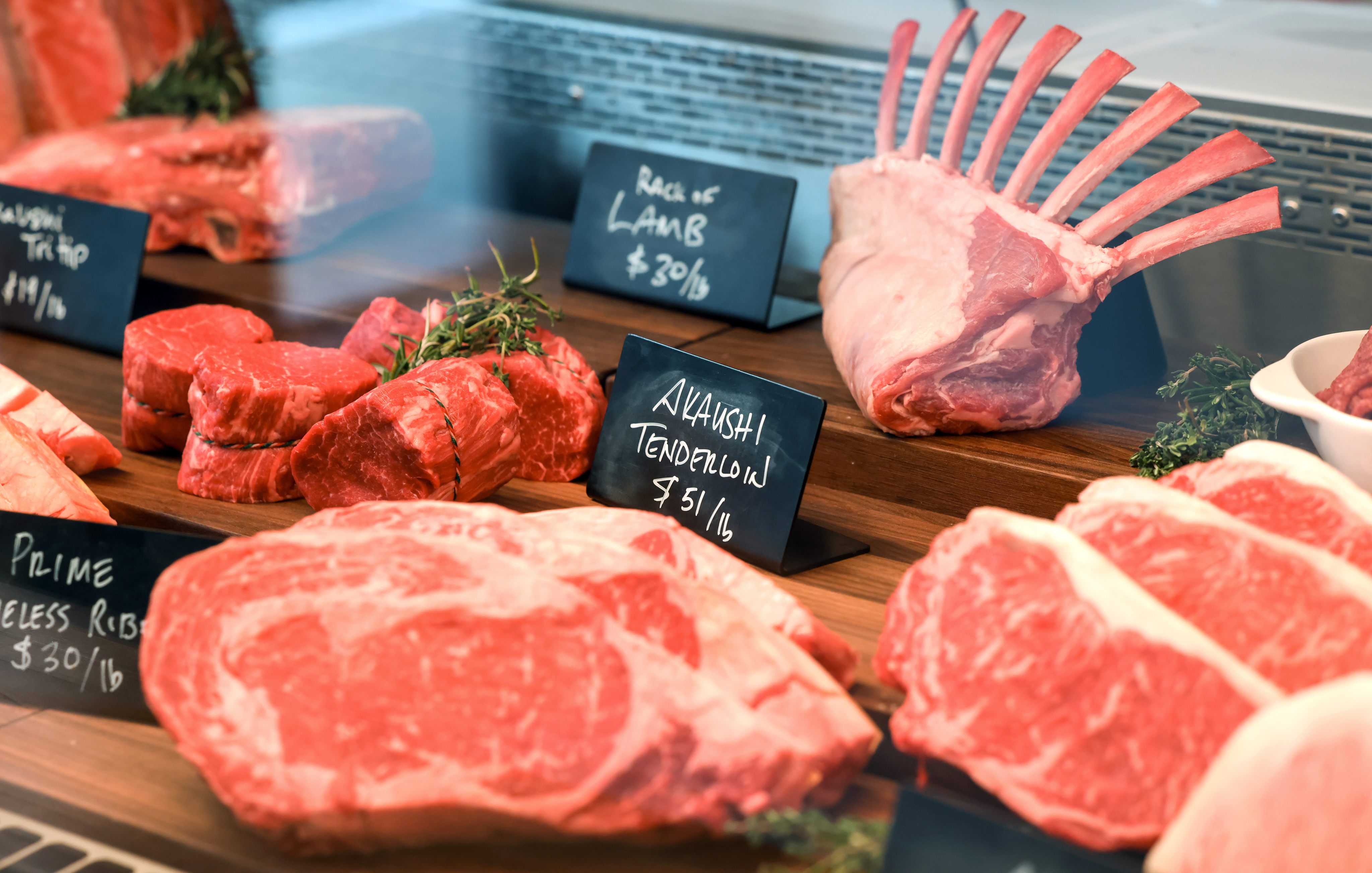Exactly How to Choose the Perfect Cut of Meat From a Trusted Meat Market
Picking the excellent cut of meat from a trusted meat market requires a thoughtful technique that balances top quality, culinary objective, and budget. Recognizing the various kinds of meat and their respective cuts is essential, as is engaging with your butcher to obtain insights right into sourcing and prep work. Observing characteristics such as shade, texture, and marbling can better direct your choice. As you consider these elements, it comes to be clear that the nuances of your option can dramatically influence the end result of your dish, motivating a deeper expedition of the requirements that truly matter.
Recognizing Meat Cuts


For example, the tenderloin is treasured for its buttery structure and minimal connective cells, making it excellent for quick food preparation techniques such as cooking or pan-searing. On the other hand, tougher cuts like the brisket or shank take advantage of sluggish cooking methods to break down collagen, generating rich and savory results.
In addition, the fat content of a cut plays an essential function in taste profile and wetness retention during cooking. Cuts with greater fat content, such as ribeye, use a more robust taste, while leaner options, like sirloin, might need cautious prep work to avoid dry skin (bagley meat market edwardsville il). Recognizing these nuances allows for notified selections that raise culinary creations, ensuring that each meal showcases the very best qualities of the chosen meat
Variables to Think About
When picking the perfect cut of meat, a number of essential elements come right into play that can dramatically impact the last dish. Primarily, take into consideration the type of meat you desire-- beef, pork, lamb, or chicken-- as each deals unique flavors and structures. The details cut within that category is equally essential; for example, ribeye supplies abundant marbling, while tenderloin gives a lean, buttery texture.
One more element is the cooking technique you intend to make use of. Cuts ideal for barbecuing, such as T-bones or sirloins, vary from those far better matched for slow-moving cooking, like chuck roasts or shanks. Additionally, freshness is vital; always select meat with a lively color and firm structure, indicating high quality and correct handling.
Additionally, take into consideration the resource of the meat. A relied on meat market usually gives in your area sourced, hormone-free, and grass-fed choices, which can improve flavor and nutritional value. Lastly, your budget will certainly guide your option. Premium cuts may supply outstanding preference, but there are likewise economical options that, when prepared correctly, can produce tasty outcomes. Stabilizing these elements will certainly assist you choose the excellent cut for your cooking requirements.
Concerns to Ask Your Butcher
A butcher's expertise can be very additional hints useful when selecting the perfect cut of meat for your cooking ventures. Begin by inquiring about the source of the meat.
Following, ask regarding the various cuts available for the kind of meat you favor. An experienced butcher will certainly explain the nuances of each cut, assisting you pick one that matches your cooking technique and preferred end result. Do not hesitate to ask about the ideal try this web-site cooking techniques for a details cut; butchers frequently have suggestions that can improve your meal.
It's additionally sensible to ask about the meat's freshness. Inquire about the shipment routine and exactly how commonly the meat is replenished. This will certainly offer you self-confidence in the quality of what you are purchasing. Ask for recommendations based on your personal taste preferences. An excellent butcher will certainly aspire to share their knowledge and suggest cuts that will delight your taste. Engaging your butcher with these questions can substantially enhance your meat choice experience.
Recognizing Quality Meat

Structure is one more important variable; top quality meat should really feel solid and a little bouncy to the touch. Stay clear of any kind of cuts that really feel slimed or excessively dry, as these can indicate putridity or incorrect storage. Furthermore, odor plays a crucial function; fresh meat needs to have a clean, neutral scent, while any type of repulsive or sour imp source smells are warnings.
Finally, think about the source. Getting from a trustworthy meat market, where the meat's origin is recognized, can ensure greater top quality criteria. By concentrating on these signs-- color, marbling, structure, odor, and source-- you can with confidence pick cuts that will certainly raise your cooking and dining experience.
Food Preparation Approaches for every Cut
Choosing the right food preparation technique is critical for making best use of the taste and tenderness of each cut of meat. Different cuts have special qualities that determine one of the most appropriate cooking strategies.
For tender cuts, such as filet mignon or ribeye, dry warmth methods like barbecuing, broiling, or pan-searing are perfect. These strategies enhance the natural tastes while making certain a juicy, succulent structure. On the other hand, tougher cuts, such as chuck or brisket, gain from moist warm approaches, including braising or slow cooking. These methods assist damage down connective cells, resulting in a tender, tasty meal.
Pork chops and poultry busts are functional and can be prepared using both dry and moist approaches. While grilling or roasting can yield delicious results, poaching or sautéing can preserve wetness and tenderness. For lamb, techniques like toasting or braising are recommended, as they complement the meat's robust flavor.

Conclusion
In verdict, choosing the perfect cut of meat from a trusted meat market necessitates a comprehensive understanding of meat cuts and factor to consider of various aspects, including resource, quality, and food preparation techniques. Involving with the butcher with targeted inquiries can produce valuable insights and referrals tailored to details culinary demands. Prioritizing both top quality and budget will certainly boost the general gastronomic experience, ensuring that the selected cut satisfies assumptions in both flavor and prep work.